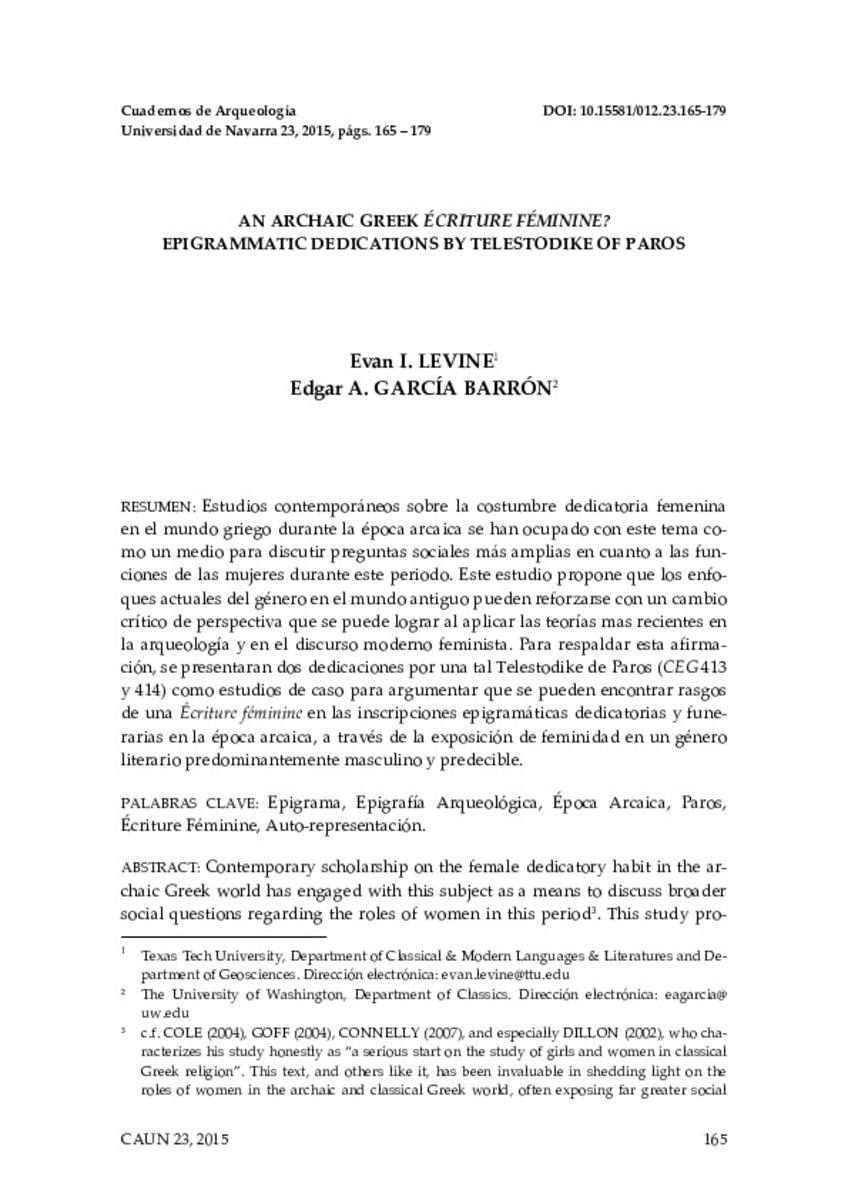An Archaic Greek Écriture Féminine? Epigrammatic dedications by Telestodike of Paros [Discusiones]
Keywords:
Epigrama
Epigrafía Arqueológica
Época Arcaica
Paros
Écriture Féminine
Auto‐representación
Materias Investigacion::Historia::Arqueología
Epigram
Archaeological Epigraphy
Archaic Greece
Self‐representation
Publisher:
Servicio de Publicaciones de la Universidad de Navarra
Citation:
Evan I. Levine – Edgard A. García-Barrón. An Archaic Greek Écriture Féminine? Epigrammatic dedications by Telestodike of Paros. Cuadernos de Arqueología. Universidad de Navarra 23, 2015, págs. 165 – 179.
Statistics and impact
0 citas en

0 citas en

Items in Dadun are protected by copyright, with all rights reserved, unless otherwise indicated.







